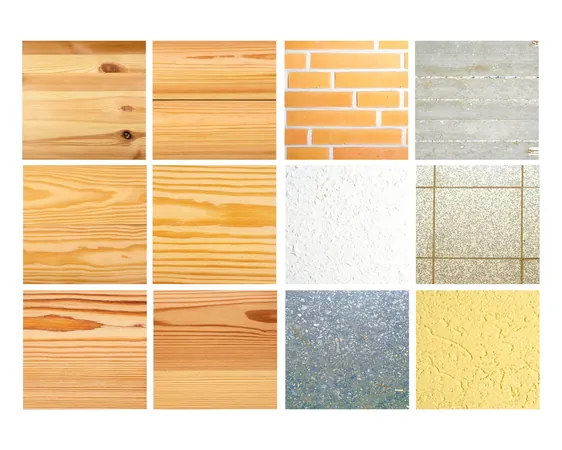
Unlocking the Power of Wood Scents: How Visual Cues Transform Your Indoor Experience
2025-08-04
Author: Li
Does What You See Affect How You Smell?
Prepare for a game-changer in how we perceive scents! Recent research reveals that our evaluation of odors—especially that soothing wood scent we love—doesn’t just depend on the smell itself but is heavily influenced by the context in which we encounter it.
Revolutionary Research on Wood Odors
A team from the Leibniz Research Center for Working Environment and Human Factors (IfADo) and the Thuenen Institute of Wood Research in Hamburg has unveiled fascinating findings that suggest wood odors are rated significantly more pleasant when paired with corresponding images of wood. This groundbreaking insight challenges the longstanding health assessments of building products.
Why Wood is Winning Hearts (and Homes) Everyday!
In a world seeking sustainability, wood is taking center stage. Unlike concrete or steel, wood brings warmth and a touch of nature indoors. However, let’s not forget that every beautiful wooden fixture carries its own unique scent. These organic materials release volatile organic compounds (VOCs), which can affect indoor air quality.
The Big Question: How Do We Perceive Wood Scents?
The "Wood for Good" project dives deep into how people react to various wood scents—like the fresh aroma of pine or the earthy scent of oak—and how visuals impact those ratings. The research, conducted under strict guidelines, involved participants sniffing a variety of wood odors while evaluating them based on intensity, pleasantness, and familiarity.
Visuals Make Scents More Sweet
A striking finding emerged: when participants saw an image of the wood they were smelling, their perception of the scent improved dramatically. For instance, pine scents, rich in terpenes, were rated highly when the matching visual was presented. Meanwhile, aromas associated with oak were considered less favorable but were still positively influenced by visual context.
The Unseen Connection: Smell Meets Sight
Viviane Gallus from IfADo took it one step further, investigating brain reactions to these combined sensory stimuli. Images of wooden surfaces paired with wood scents created a harmonious experience, making the aroma significantly more appealing—not just for fresh pine, but even over normal ambient air. This suggests our brains are wired to link visuals with olfactory sensations.
Health Risks vs. Smell Strength: What You Need to Know
The research implies that strong smells aren’t necessarily harmful, provided that VOC levels comply with health regulations. So, the takeaway? Indoor air quality assessment should prioritize actual VOC concentrations over olfactory tests that can be easily swayed by visuals.
Practical Implications for Your Home
For homeowners and builders, understanding this connection is crucial. To enhance the sensory experience in spaces featuring wood, consider keeping wooden elements visible. Architectural decisions like exposing ceiling beams or incorporating wood paneling could significantly elevate the perceived quality of indoor air and overall well-being.
Final Thoughts: The Art of Smell and Sight
These findings offer valuable insights into how we can optimize our indoor environments. The next time you walk into a room filled with wooden elements, take a moment to appreciate not just the sight but the smell—and how they complement each other in creating a pleasant living space!

 Brasil (PT)
Brasil (PT)
 Canada (EN)
Canada (EN)
 Chile (ES)
Chile (ES)
 Česko (CS)
Česko (CS)
 대한민국 (KO)
대한민국 (KO)
 España (ES)
España (ES)
 France (FR)
France (FR)
 Hong Kong (EN)
Hong Kong (EN)
 Italia (IT)
Italia (IT)
 日本 (JA)
日本 (JA)
 Magyarország (HU)
Magyarország (HU)
 Norge (NO)
Norge (NO)
 Polska (PL)
Polska (PL)
 Schweiz (DE)
Schweiz (DE)
 Singapore (EN)
Singapore (EN)
 Sverige (SV)
Sverige (SV)
 Suomi (FI)
Suomi (FI)
 Türkiye (TR)
Türkiye (TR)
 الإمارات العربية المتحدة (AR)
الإمارات العربية المتحدة (AR)